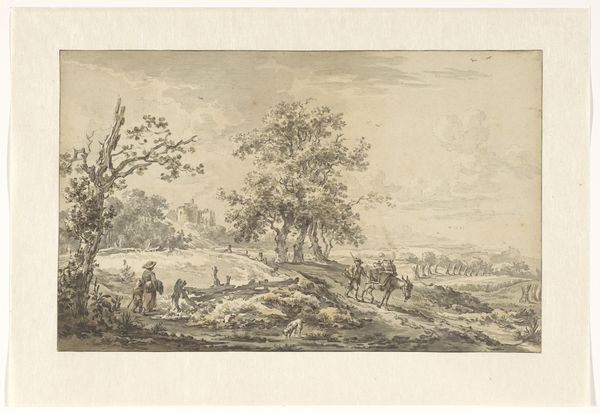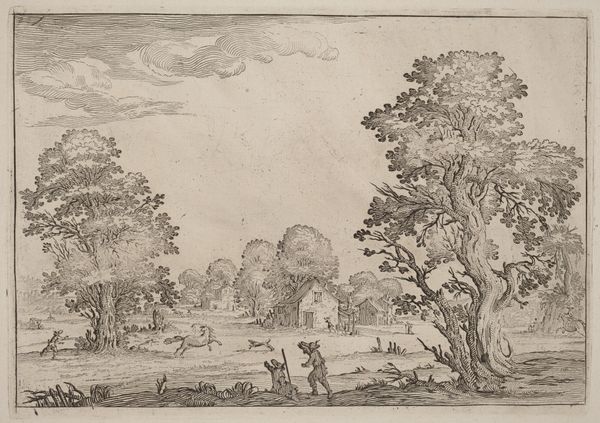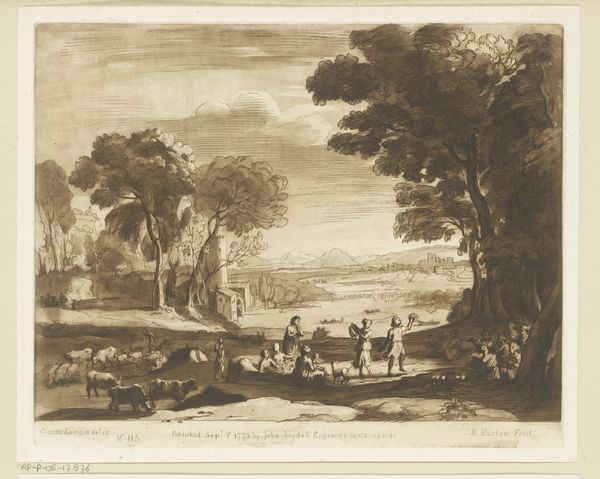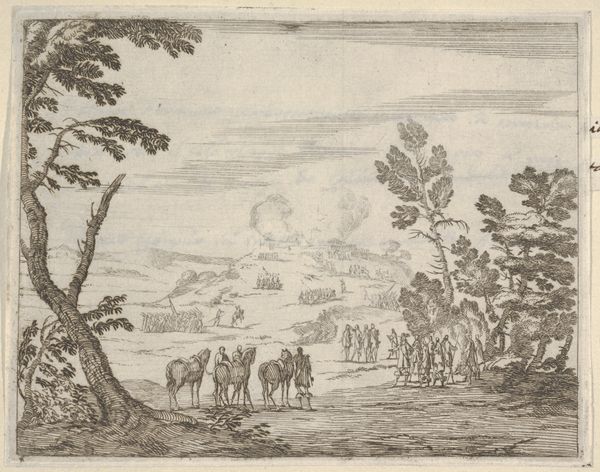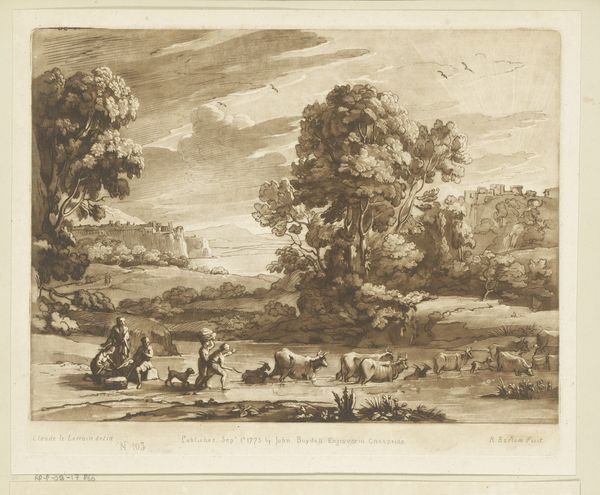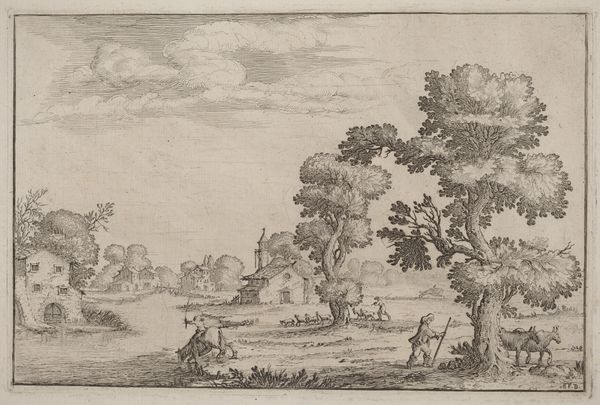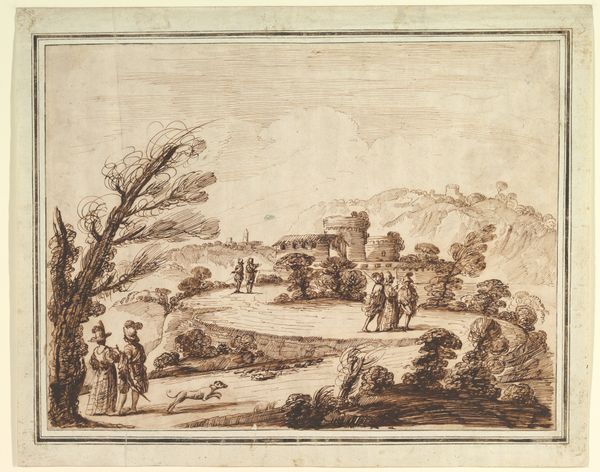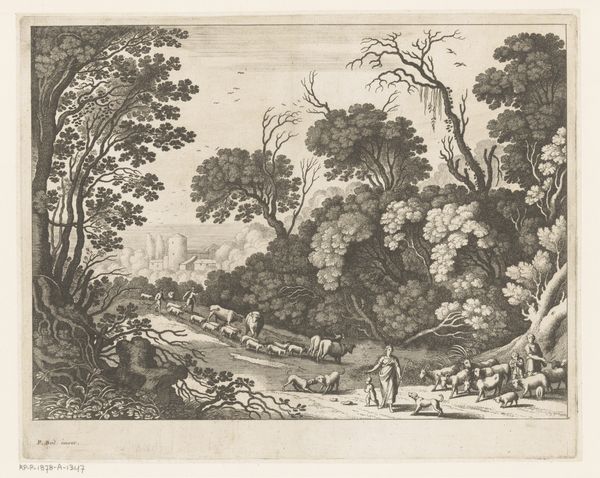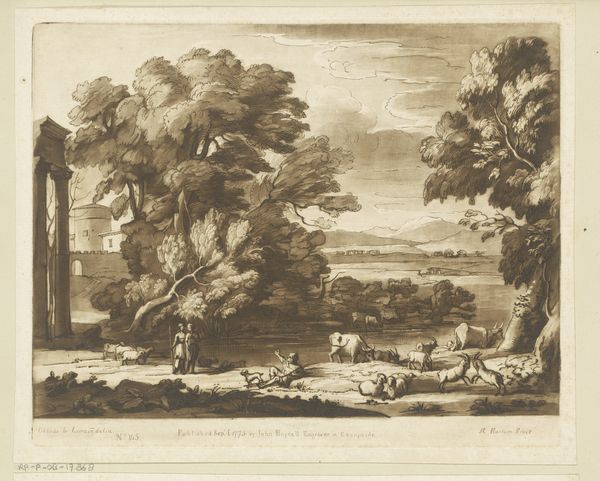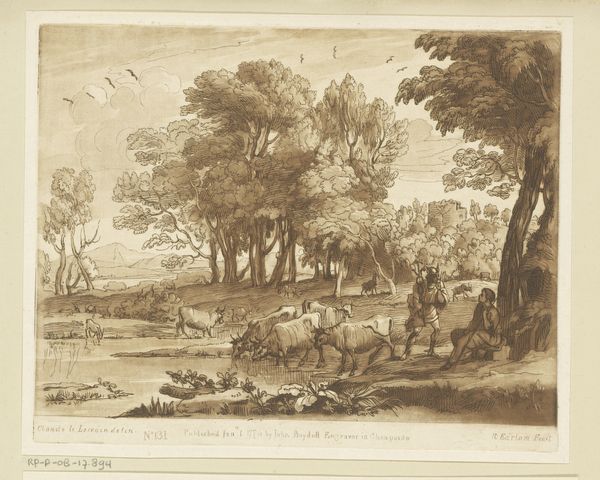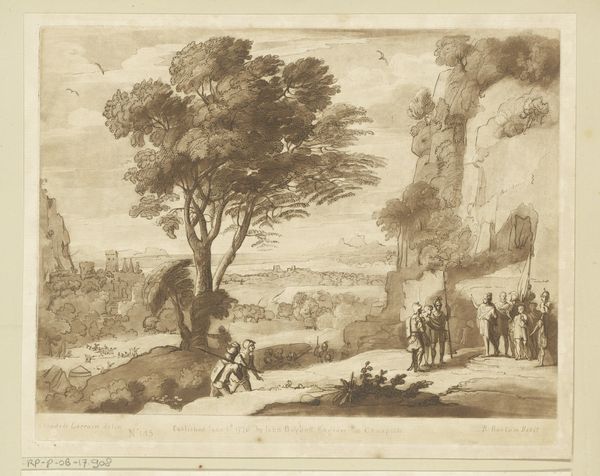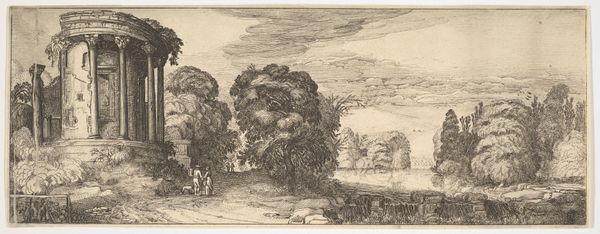
Dimensions: sheet: 7 7/8 x 10 1/16 in. (20 x 25.5 cm)
Copyright: Public Domain
Editor: So, this is "Landscape with Shepherd and Shepherdess," an etching in brown ink by Richard Earlom, dating back to 1776. It strikes me as a really tranquil scene; everything feels very balanced. What draws your eye in this work? Curator: The appeal for me lies in the echo of classical ideals – this imagined golden age. See how Earlom presents the shepherds? They are not simply workers, but participants in a pastoral dream. The very act of representing this scene harkens back to older artistic traditions, and it uses this continuity to lend legitimacy and, indeed, beauty. What kind of feeling does that symbolism give you? Editor: I suppose it gives a sense of… wistfulness? Like we are looking at something beautiful that has already passed or maybe never even existed. It almost feels artificial, doesn't it? Curator: Precisely. Artificial, yet powerful. Consider the symbols here: the grazing cattle, the serene landscape itself. They tap into collective memories of an idealized rural existence. We see a continuous symbolic thread connecting us to past visions of tranquility and simple pleasures, even though such an existence may have always been more of a concept than a reality. Editor: So, Earlom is using familiar symbols to evoke that sense of history? It’s like the image is borrowing authority and feeling from those symbols. Curator: Precisely. Think about how we still use landscape today. Why do these idealized landscapes resonate, even now? Editor: It makes me realize how much these symbols stay with us and shape how we see the world around us, or even what we aspire to. Thank you! Curator: It is through reflecting upon such historical echoes that we might more fully understand the enduring resonance of visual imagery.
Comments
No comments
Be the first to comment and join the conversation on the ultimate creative platform.
